What hormone prepares the body to respond to emergencies?
Stress is a pretty big deal in modern society. Most of us spend a lot of fourth dimension either feeling information technology, trying to relieve it, or both. And then, what is stress? At its cadre, stress is all about how the body reacts to a potential threat. The fight-or-flight (or fight-flight-freeze) response, aka the "alarm" stage of the stress response, is there for a practiced reason—it prepares the body to deal with danger (you know, like outrunning a ferocious animal that'southward trying to eat you, or fighting off a fellow cave-person coming at you lot with a spear). Once the danger has passed, the body goes back to business as usual. Chronic stress, on the other hand, happens when the body is constantly responding to stress and remaining in a heightened state for a long fourth dimension. Information technology can actually do damage to the body over time. Today, nosotros're going to talk almost both of these types of stress—the classic fight-or-flight response as well as what happens when your body experiences persistent stress. When it comes to the torso's stress response, the adrenal glands are the stars of the show. My colleagues hither at VB similar to refer to these guys equally "the party hats of the kidneys," which is a pretty apt description considering their fun pointy shape and the fact that at that place'due south one sitting atop each kidney. You might also know the adrenal glands as the suprarenal glands for this reason—suprarenal literally means "above the kidney." Let's bank check out the adrenal glands in context in Homo Anatomy Atlas: Each adrenal gland has two main parts: an outer cortex, which makes up the majority of the gland, and an internal medulla. The cortex is composed of glandular epithelial tissue, whereas the medulla is made of nervous tissue. Different regions of the cortex produce a variety of different hormones, including mineralocorticoids (which affect water and mineral balance), glucocorticoids (which affect glucose levels), and gonadocorticoids (adrenal sex activity hormones). Cortisol is a glucocorticoid released during the later role of the stress response. The medulla produces epinephrine/adrenaline (E) and norepinephrine/noradrenaline (NE). Epinephrine is the principal hormone that interacts with the sympathetic nervous organization in the initial part of the fight-or-flight response. Fun fact: epinephrine and norepinephrine function both as hormones in the endocrine system and equally neurotransmitters in the nervous system! In fact, norepinephrine is the main neurotransmitter of the sympathetic nervous organisation. At present that yous've gotten to know the adrenal glands a flake, allow'due south go step-by-step through the fight-or-flight response. When your senses perceive a dangerous or threatening event, this triggers the amygdala—part of the limbic system involved in memory and emotion—to audio the first alarm. Basically, the amygdala presses the big, blood-red "PANIC" push button or, if yous like thinking in terms of Lord of the Rings references like I do, lights the buoy at the top of the mountain that means "Gondor calls for aid!". The hypothalamus, a cardinal histrion in the endocrine system, sees that beacon and musters the soldiers of Rohan to help—that is, information technology activates the sympathetic nervous system. This, in turn, signals the adrenal glands to secrete epinephrine and norepinephrine into the bloodstream. Image from Human Anatomy Atlas. The release of epinephrine helps the torso answer to danger in a number of ways. The bronchioles in the lungs expand, and the rate of respiration increases, allowing for greater oxygen intake. The middle beats faster, causing a rise in pulse and blood pressure. All this is so that the muscles and the encephalon tin get all the blood (and therefore oxygen) they need to function optimally. Other physiological changes that occur during the fight-or-flight response are dilation of the pupils and increased tension in the muscles equally they gear up to move. Digestion and reproductive functions are suppressed. Need a skillful fashion to recollect epinephrine's office in the stress response? Think nigh what an EpiPen (a shot of epinephrine) does to counteract a astringent allergic reaction. While anaphylaxis constricts airways and lowers blood pressure, epinephrine from the EpiPen relaxes muscles in the airways, helping them to expand, and constricts the blood vessels, boosting blood pressure. It likewise increases center rate and blood menstruum to the eye. Ok, back to the curt-term stress response. If the perceived threat remains beyond that starting time rush of epinephrine, a system called the HPA centrality will kick in to assist the torso stay alarm and ready for action. HPA is a super helpful acronym—it non only represents the hypothalamus, pituitary, and adrenal glands, but it also does so in the correct lodge. The hypothalamus kicks off this part of the stress response by releasing a hormone called CRH (corticotropin-releasing hormone). This hormone signals the pituitary gland to release another hormone called ACTH (adrenocorticotropic hormone). The hypothalamus secretes CRH, and the anterior pituitary gland secretes ACTH. Paradigm from Human Anatomy Atlas. ACTH travels through the bloodstream from the pituitary gland and signals the adrenal glands to release cortisol, which you lot might know every bit "the stress hormone." Cortisol helps give the torso the free energy it needs to stay on high warning for a bit longer by signaling several organs in the body to make changes impacting blood glucose levels. When cortisol levels are high, the liver volition increase gluconeogenesis, the product of glucose from stored glycogen. Similarly, adipose tissue will respond to high cortisol levels by increasing lipolysis, the breakdown of fats into glycerol and fatty acids. Increased cortisol causes the pancreas to decrease insulin levels and increase glucagon. Let'south say yous experience the fight-or-flight response while driving your car and you lot have to swerve suddenly to avoid an accident. You'll most likely react in a split 2d, and you'll experience that increment in pulse and respiration. Maybe your easily will be a niggling shaky as you continue driving. Now that the threat has passed, however, your trunk is free to calm down. Recovering from an (everyday) astute stress response usually takes betwixt 20 and thirty minutes. According to the general adaptation syndrome (GAS) model of stress responses, the period in which the trunk starts to wind down from a fight-or-flight response is called the resistance phase. Cortisol levels (hopefully) drop, the sympathetic nervous arrangement dials down its activity, and the parasympathetic can resume its "rest and assimilate" functions. If the body is not able to recover, information technology will somewhen become exhausted, leading to fatigue, depression, and anxiety. This is when stress tin take on information technology's about insidious class: chronic stress. Chronic stress happens when the body is constantly responding to stress and is not able to fully recover. Cortisol remains high fifty-fifty for long periods of time. Loftier-force per unit area jobs, financial hardship, relationship troubles, and trauma are just a few sources of long-term stress that tin take harmful psychological and physiological furnishings. Continuous fight-or-flight responses and HPA action are crude on the body. Chronic stress can increase the risk of a number of health conditions including, merely non limited to: Yous also may have heard of a contempo study by Zhang et al. confirming that stress can really brand your pilus plow prematurely grey. Well, it'south truthful! Information technology turns out that the norepinephrine, used as a neurotransmitter by the sympathetic nervous system'southward response to stress, depletes a population of peel cells called melanocyte stem cells (MeSCs). MeSCs generate new melanocytes, the cells responsible for giving hair its pigment. (Want to read more about hair growth? Read our blog post on hair here!) Zhang et al. institute that because of a certain receptor on the outside of the MeSCs, norepinephrine causes all the MeSCs in a given hair follicle to differentiate into melanocytes all at once. The next time a hair grows from that follicle, there won't be whatsoever melanocytes to give information technology pigment considering there are no MeSCs left to generate new melanocytes. In a review of the Zhang et al. report, Clark & Deppmann suggested that norepinephrine from the sympathetic nervous system's stress response could affect other populations of stalk cells in a similar way. That'due south definitely a absurd artery for farther research! There is a variety of different adrenal gland disorders, depending on the over or underproduction of hormones in the adrenal glands. For now, nosotros'll focus on cortisol, since information technology's of import to the trunk'south stress response. Cushing syndrome happens when there is too much cortisol in the body. At that place are two types of Cushing syndrome: exogenous and endogenous. Exogenous Cushing syndrome is the effect of high intake of corticosteroids from outside sources—commonly medications such equally prednisone or dexamethasone, which are used in the handling of conditions like rheumatoid arthritis, lupus, IBD, and MS. Endogenous Cushing syndrome is unremarkably the upshot of an adrenal gland or pituitary gland tumor. An adrenal gland tumor volition cause overproduction of cortisol directly, and a pituitary gland tumor will produce excess ACTH, which indirectly motivates overproduction of cortisol. (Recollect, ACTH tells the adrenal glands to release cortisol into the bloodstream.) Symptoms of Cushing syndrome can include weight gain and fatty deposits in the upper trunk, purple stretch marks on the abdomen, peel that easily bruises, growth of facial hair, muscle weakness, and os loss. If left untreated, Cushing syndrome can lead to osteoporosis, hypertension, and diabetes. If the cause of Cushing syndrome is a tumor, surgery is ordinarily the first handling method used. Radiation treatment, as well as medication to control cortisol production, may likewise be necessary. Addison's disease, also called primary adrenal insufficiency, is the "contrary" of Cushing syndrome—it is an autoimmune disorder in which the adrenal glands don't produce enough cortisol (and they often also don't produce enough of a hormone called aldosterone, which acts in the kidneys to regulate sodium and potassium levels in the blood). In cases of Addison's disease, the immune system attacks the cortex of the adrenal glands, damaging them over fourth dimension. The listing of symptoms of Addison's disease is long, but some notable symptoms include: Treatment for Addison's disease ordinarily involves the patient taking bogus versions of cortisol and aldosterone. If left untreated, Addison's illness can result in acute adrenal failure, too known as an Addisonian crisis. Secondary adrenal insufficiency is some other condition in which the adrenal glands don't produce sufficient cortisol because the pituitary gland doesn't produce enough ACTH. Co-ordinate to the Mayo Clinic, mutual causes of secondary adrenal insufficiency are "beneficial pituitary tumors, inflammation and prior pituitary surgery." The symptoms of and pharmaceutical treatment options for secondary adrenal insufficiency are like to those of Addison'south illness. Nosotros just threw a lot of information at you, so let'due south epitomize with a handy chart! The primal players in the body's response to stress are equally follows: Amygdala Sounds the alarm when the senses pick upwards signs of danger. Sympathetic nervous arrangement Prepares the body to fight, flee, or freeze with the assist of epinephrine by increasing center charge per unit and respiration rate. Hypothalamus Produces and releases CRH, which signals the pituitary gland to release ACTH. Anterior pituitary gland Produces and releases ACTH, which signals the adrenal glands to release cortisol. Adrenal glands Releases hormones primal to the stress response. Also, retrieve that although the acute stress response is important to our survival, helping us react in time to go out of potentially life-threatening situations, experiencing chronic stress tin take a detrimental outcome on one's health. Desire to learn more near the key structures and functions of the endocrine system? Check out our Endocrine Arrangement eBook! Exist sure to subscribe to the Visible Body Blog for more anatomy awesomeness! Are you an teacher? We have award-winning 3D products and resources for your anatomy and physiology form!Acquire more than hither. Meet the adrenal glands

The acute stress response: playing hormone telephone
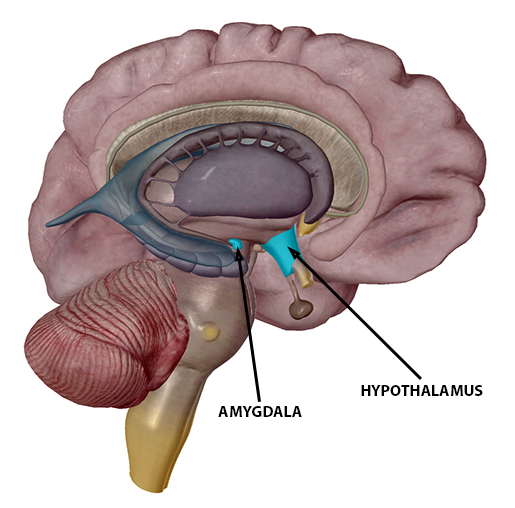
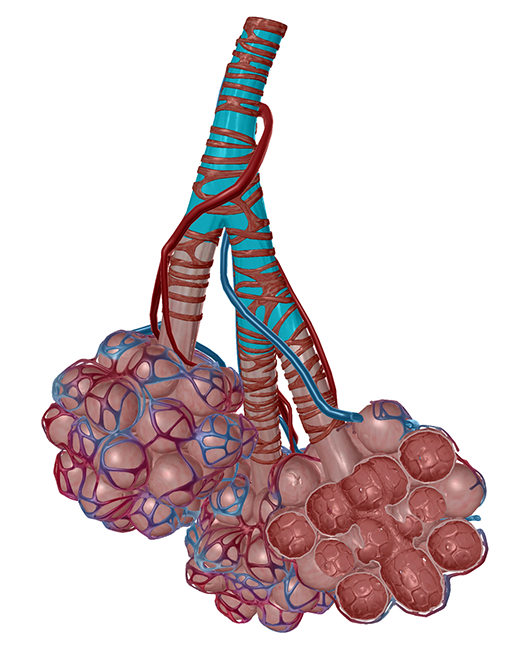 Microanatomy view of a terminal bronchiole from Human Beefcake Atlas.
Microanatomy view of a terminal bronchiole from Human Beefcake Atlas. 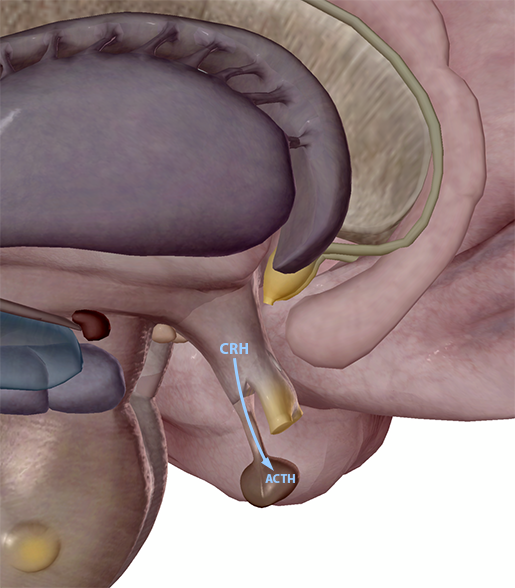
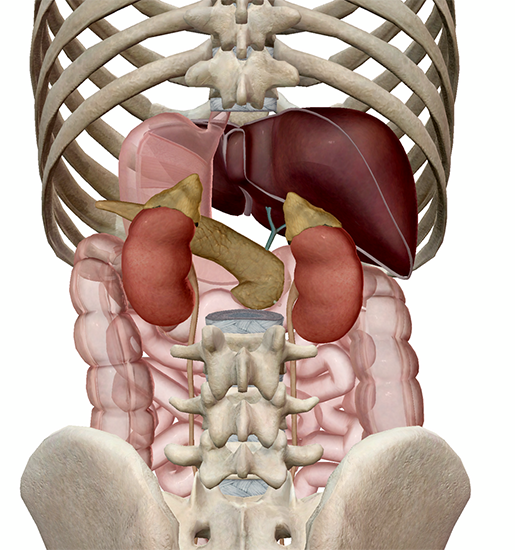 Posterior view of the adrenal glands, liver, and pancreas. Image from Human being Anatomy Atlas.
Posterior view of the adrenal glands, liver, and pancreas. Image from Human being Anatomy Atlas. Recovery
The dangers of chronic stress
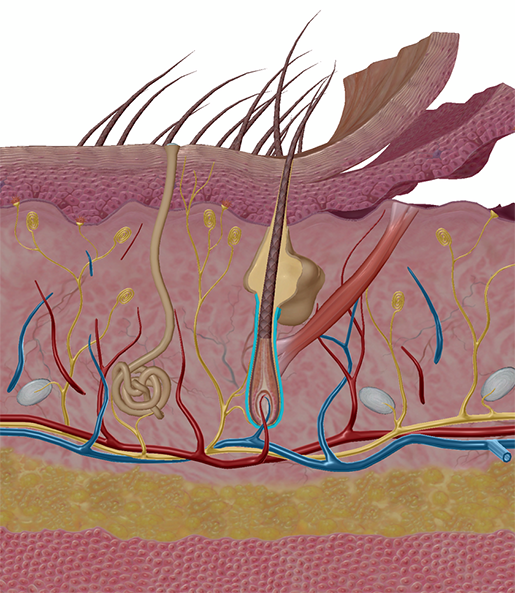 Hair follicle (highlighted). Image from Homo Anatomy Atlas.
Hair follicle (highlighted). Image from Homo Anatomy Atlas. Adrenal gland disorders
A quick review

Share
Source: https://www.visiblebody.com/blog/the-endocrine-system-the-adrenal-glands-and-the-stress-response
0 Response to "What hormone prepares the body to respond to emergencies?"
Post a Comment